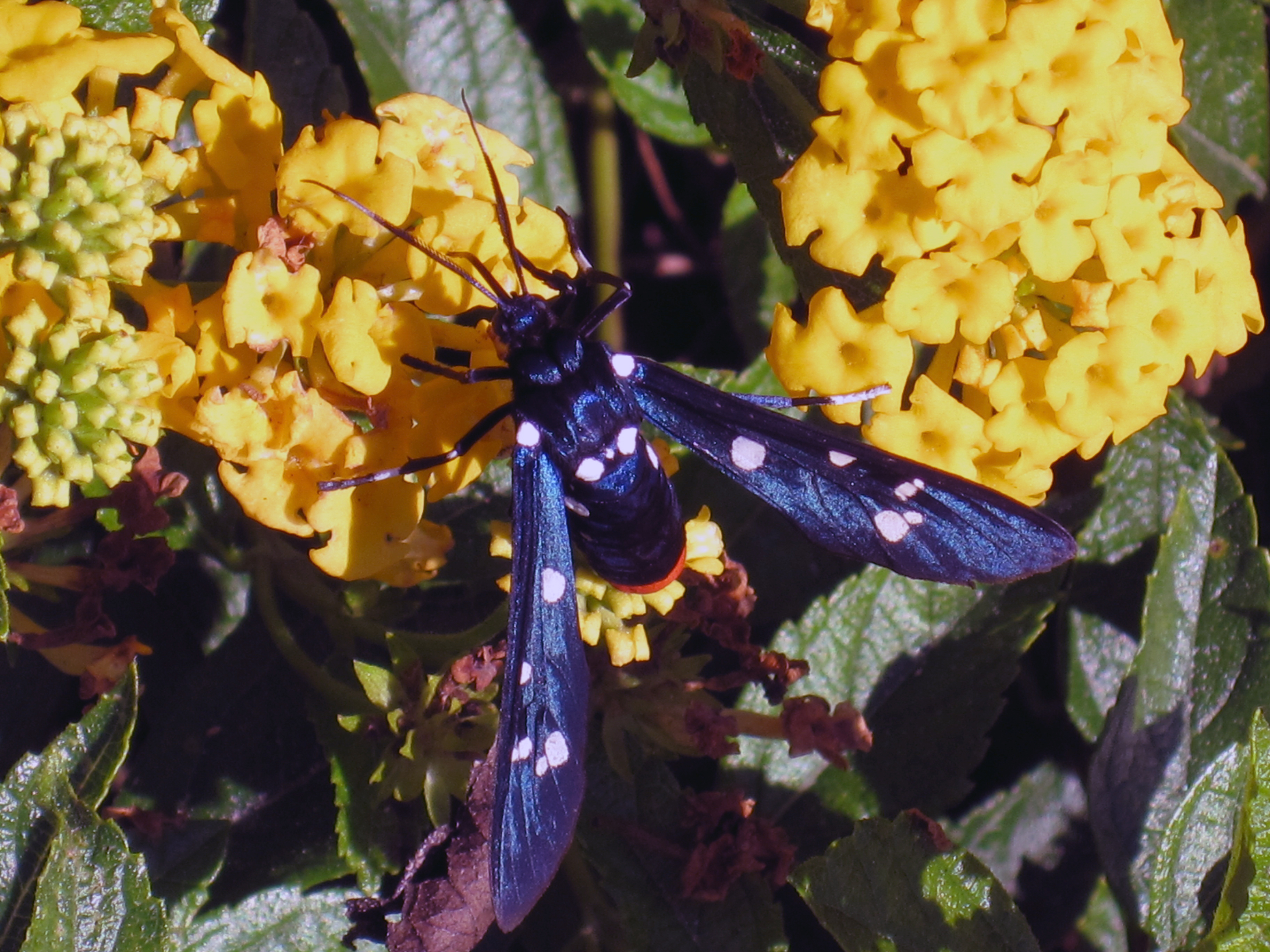Syntomeida epilais on:
[Wikipedia]
[Google]
[Amazon]
''Syntomeida epilais'', the polka-dot wasp moth or oleander moth, is a species of

Image gallery of the moth and larva
{{Taxonbar, from=Q3508953 Euchromiina
moth
Moths are a paraphyletic group of insects that includes all members of the order Lepidoptera that are not butterflies, with moths making up the vast majority of the order. There are thought to be approximately 160,000 species of moth, many of w ...
thought to be native to the Caribbean
The Caribbean (, ) ( es, El Caribe; french: la Caraïbe; ht, Karayib; nl, De Caraïben) is a region of the Americas that consists of the Caribbean Sea, its islands (some surrounded by the Caribbean Sea and some bordering both the Caribbean Se ...
. Its larvae feed on the oleander
''Nerium oleander'' ( ), most commonly known as oleander or nerium, is a shrub or small tree cultivated worldwide in temperate and subtropical areas as an ornamental and landscaping plant. It is the only species currently classified in the ge ...
plant. Like most wasp moths, these are day fliers.
They prefer Neotropic areas, to which they are native. The North American subspecies is ''S. epilais jucundissima'', which is locally common in all areas of Florida, and has been seen as far north as South Carolina
)''Animis opibusque parati'' ( for, , Latin, Prepared in mind and resources, links=no)
, anthem = " Carolina";" South Carolina On My Mind"
, Former = Province of South Carolina
, seat = Columbia
, LargestCity = Charleston
, LargestMetro = ...
, and west to Mississippi
Mississippi () is a state in the Southeastern region of the United States, bordered to the north by Tennessee; to the east by Alabama; to the south by the Gulf of Mexico; to the southwest by Louisiana; and to the northwest by Arkansas. Miss ...
and Texas
Texas (, ; Spanish language, Spanish: ''Texas'', ''Tejas'') is a state in the South Central United States, South Central region of the United States. At 268,596 square miles (695,662 km2), and with more than 29.1 million residents in 2 ...
.
Description
They are dark metallic blue with white polka-dots on the wings and upper abdomen, and the tip of the abdomen is bright red. Thismimicry
In evolutionary biology, mimicry is an evolved resemblance between an organism and another object, often an organism of another species. Mimicry may evolve between different species, or between individuals of the same species. Often, mimicry f ...
makes it look like a dangerous wasp, while in fact being a harmless moth. The caterpillars are orange or dark orange with long black hairs making the caterpillars look dangerous, but the setae
In biology, setae (singular seta ; from the Latin word for "bristle") are any of a number of different bristle- or hair-like structures on living organisms.
Animal setae
Protostomes
Annelid setae are stiff bristles present on the body. Th ...
do not inflict any harm.
Reproduction and breeding
Females contact male polka-dot wasp moths by means of ultrasonic signals. On the branch, the sound travels, and then the male follows the sound to his new mate. When he reaches her, he emits an answering signal. After mating, the females find a plant on which to lay their eggs. Groups of from 12 to 75 eggs are laid on the undersides of the oleander leaves. The spherical eggs are pale cream to light yellow in color; each is less than 1 mm in diameter.As a pest
Thelarva
A larva (; plural larvae ) is a distinct juvenile form many animals undergo before metamorphosis into adults. Animals with indirect development such as insects, amphibians, or cnidarians typically have a larval phase of their life cycle.
The ...
e stage of the polka-dot wasp moth, commonly called the oleander caterpillar, is widely known for its gluttonous appetite. The caterpillar feeds in almost any location (excepting California) where its food, the oleander
''Nerium oleander'' ( ), most commonly known as oleander or nerium, is a shrub or small tree cultivated worldwide in temperate and subtropical areas as an ornamental and landscaping plant. It is the only species currently classified in the ge ...
plant, can be found. They are gregarious and can cause damage from minor to severe. It may also feed on devil's potato plants, which are believed to be its native food before the oleander plant was introduced to the Americas by Spanish settlers in the seventeenth century. They also feed on desert rose plants.
Subspecies
*''Syntomeida epilais epilais'' *''Syntomeida epilais jucundissima'' Dyar, 1907 (Florida, Georgia)See also
*Oleander
''Nerium oleander'' ( ), most commonly known as oleander or nerium, is a shrub or small tree cultivated worldwide in temperate and subtropical areas as an ornamental and landscaping plant. It is the only species currently classified in the ge ...
* Euchromiini
*'' Empyreuma pugione'', spotted oleandar caterpillar moth
References
External links
Image gallery of the moth and larva
{{Taxonbar, from=Q3508953 Euchromiina